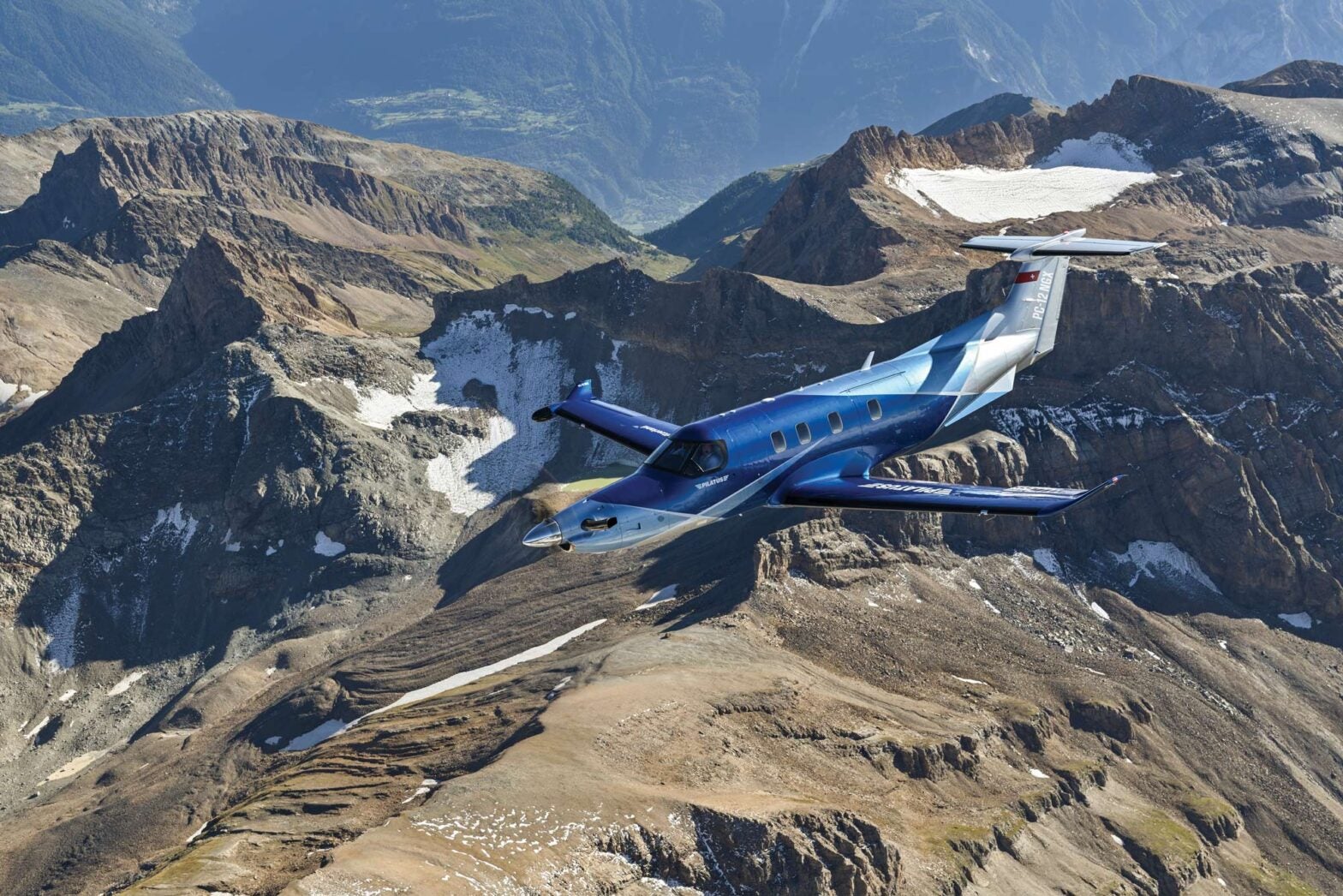I first flew a Pilatus PC-12 Model 10 back in 2008 and found it made a nice, stable instrument platform. At 270 knots, it was no jet, but a walk through that gargantuan cabin on the ground with the massive rear cargo door open made no bones about the airplane’s ability to carry tons of stuff.
I think I called it an airborne Chevy Suburban. Pilatus chief pilot Jed Johnson offered a more descriptive tag line when I was in Broomfield, Colorado, for a December 2019 visit to Pilatus Business Aircraft, calling it a “turbine Suburban.”
Pilatus PC-12 NGX at a Glance
FLYING exclusive offer: 7 Day Free Trial PLUS 10% off Conklin&deDecker turbine aircraft data.No matter what nickname you give it, the PC-12 is famous for being able to haul a couple of Harleys and a few passengers out to a dirt strip and back. In fact, Pilatus specifically designed the PC-12 with a T-tail to make using a forklift possible while loading cargo through that big aft door. Johnson said, originally, Pilatus just saw the airplane as a robust utility, cargo and military airplane that was only later transformed into a luxury vehicle. Pilatus vice president of marketing Tom Aniello said it was actually the dealers who saw the potential for the PC-12 once the interior was spiffed up.
With 1,750 PC-12s built to date, new NGX owners—about 10 percent of whom will operate it single pilot—can carry a 2,000-pound load on a 3½-hour IFR flight with reserves and feel as though they were operating a light jet, except for the NGX’s 290-knot top speed. Adding to the airplane’s own capabilities is the venerable Pratt & Whitney Canada PT6 powerplant, which already has about 8 million flight hours under its belt, and Honeywell’s proven Epic avionics system.
Today, single-engine turboprops are almost commonplace with Daher’s TBM series, Piper’s M350, M500 and M600, and Cessna’s Caravan in addition to the PC-12. None can carry the load of the PC-12 except the Caravan, which is 100 knots slower. Only the Cessna Denali still in development might give the PC-12 a run for its money. Aniello mentioned that possibility but quickly added that the fact alone that Textron is building a PC-12 clone adds credibility to the role played by Pilatus’ airplane that’s been flying for a couple of decades.
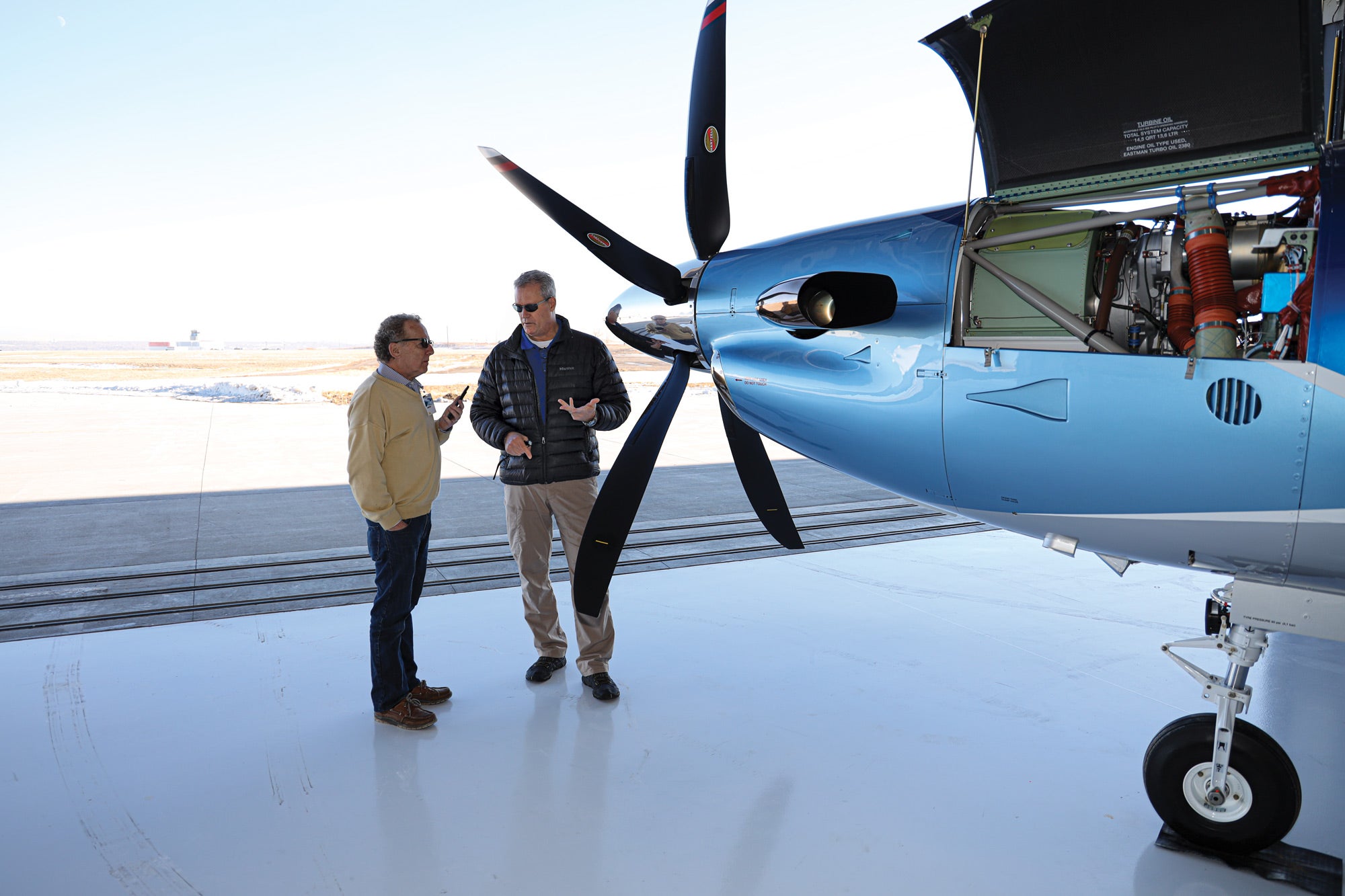
What Happens in Vegas Is No Secret
Pilatus kept development of the new NGX under wraps until the official unveiling at the National Business Aviation Association’s Business Aviation Convention & Exhibition in Las Vegas in October 2019, with EASA and FAA certification already in hand. “The NGX includes the biggest package of updates at a serial number that we’ve ever seen,” Aniello said. The NGX comes standard with a Pratt & Whitney Canada PT6E-67XP with full authority digital engine control—a first for a single-engine turboprop—that includes an autothrottle and 10 percent more usable horsepower.
In the cockpit, pilots will find updated Honeywell Epic avionics that include four 10.4-inch high-resolution screens and greater processing power. Pilatus brands their cockpit as the Advanced Cockpit Environment. The cabin windows—10 percent larger than previous models—significantly increase the amount of ambient light flooding the cabin. The cabin also includes a new air-distribution system, better lighting, heating and cooling, and significantly increased maintenance intervals to reduce operating costs. BMW Designworks created more-comfortable seating reminiscent of that automaker’s ground-based products.
Johnson told me: “Putting a fadec on the PT6 is much more complicated than on a jet because of the need to control the prop. But you also need the avionics to take advantage of the autothrottle. With [the fadec], we can now operate the engine closer to its margins for better performance.” For those who worry about the effects of electrical failures, Johnson said, “If every single electrical bus on the airplane died, you’d still have backup instruments and engine control thanks to a backup permanent- magnet alternator available just to run the fadec.”
Sitting next to the PC-24 at the Pilatus booth, the shell of the PC-12 NGX physically looked like the Model 10 I’d flown more than a decade earlier. But the outside surface of the NGX seemed to glisten. I couldn’t explain why I felt I was looking at something special with the NGX, at least not at first. Eventually, I realized it was a bit of a déjà vu moment taking me back to my high school years when the coolest muscle cars on the planet not only were capable of burning rubber at the change of a traffic light but also sported paint jobs that made them stand out from 50 feet away. We called those specialty paints “candy apple,” a mix of rich, bold colors that seemed to include a pinch of glitter.
I asked Aniello what Pilatus had done with serial number 2001, the first NGX, to create an iridescent blue scheme with a variety of brilliant accent colors. He matter-of-factly mentioned that the company was using an entirely new color palette with eye-catching Alumigrip paints that made the airplane sparkle, with names such as Titanium Silver, Silver Lake Bentley (a lighter blue), Blue Met and Snow White.
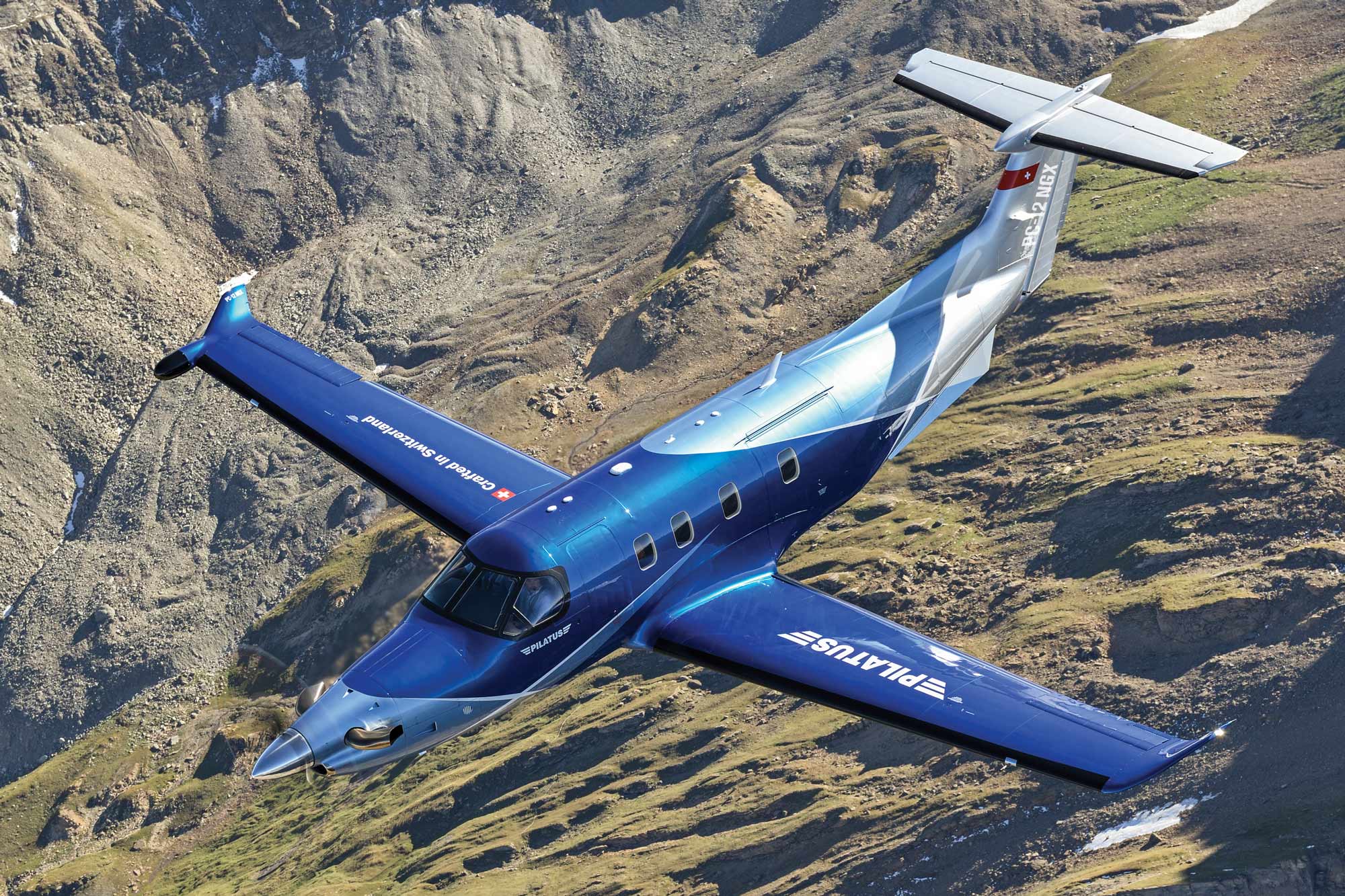
The airplane was so packed with potential buyers in Las Vegas, my first opportunity to climb aboard came during my visit to the US Completions Facility in Broomfield, Colorado (KBJC), a few months after the show, when Aniello and Johnson brought me up to speed on what was really hiding beneath the NGX’s cool paint scheme. All aircraft bound for North or South America—about 60 to 70 percent of Pilatus production—pass through Broomfield. Aniello added that all the 2020 NGX airplanes are sold. Reflecting the solid pricing stability of the PC-12 over the years, Aniello said: “The biggest impediment to selling a new PC-12…is a used PC-12. But that’s what drives us to continually improve and innovate.” Pilatus is currently building about 80 to 85 NGXs each year with a new one selling for $5.39 million, about $300,000 more than the NG.
Aniello said new NGX customers come from the ranks of Bonanza and Cirrus owners, PC-12 operators ready to upgrade to the new aircraft, and government and fleet operators. Speaking to the new features, Aniello said the quick-release, fully reclining seats are somewhat narrower but certainly taller than the originals, and they have been redesigned to make it easy to switch them out when the demand for cargo space outweighs the need to carry passengers. Each of the old seats was held in place by four bolts and required a mechanic to change out. No longer. The natural European leather covering is highlighted by pragmatic features such as new optional footrests. There’s a ground-serviceable toilet near the cockpit.
The NGX cockpit comes with a profile button like the seats in many new cars, so each pilot can customize and return the cockpit displays to just the way they like them. The NGX comes with a massive envelope, capable of carrying 400 pounds of cargo plus a 1,000-pound pallet with one pilot aboard and still remaining safely within in the limits of the CG.
NGX pilots will like the single-lever power control that eliminates the need for fussing again with the propeller, while the fadec completely automates an engine start. The new engine monitors at least 100 channels of data that help eliminate the wild-guess operating margins of the past. High-time operators will love that the all-new engine monitoring helps Pratt & Whitney increase the engine’s overhaul time from 3,500 to 5,000 hours, with a 600-hour interval between maintenance inspections. Because the NGX’s fuel passes through an oil-to-fuel heat exchanger, there’s no longer a need to add Prist to the mix on the new aircraft. Unbutton the cowling, and operators will find that most mechanical linkages to the PT6 have been eliminated, which also means adios to many possible failure points. All owners are now enrolled in the Pratt & Whitney ESP Platinum service program for the new E-series engines that covers just about any possible problem. That enrollment should also prove its value with an accurate history of the airplane when used NGXs go on the market one day.
Additional NGX items include TCAS II with resolution advisories, data link and an emergency-descent mode. The emergency-descent mode requires the autopilot to be on and helps protect not only against rapid decompression—that seldom occurs—but also the slow onset of pressure problems that are more of a concern. When the aircraft is above 20,000 feet and the cabin reaches its limit of 10,500 feet, the EDM restricts the throttle, turns the airplane 90 degrees, and accelerates to VMO until reaching a breathable 15,000 feet. Because the airplane knows where it is at all times, it won’t simply dump the airplane into any nearby peaks.
The TCAS identifies nearby aircraft and color-codes them green, brown or red, highlighting the potential threat level. The NGX also uses a stick shaker-pusher combination to provide flight-envelope protection. The airplane’s flight-guidance panel is now the same as that on the PC-24 jet.
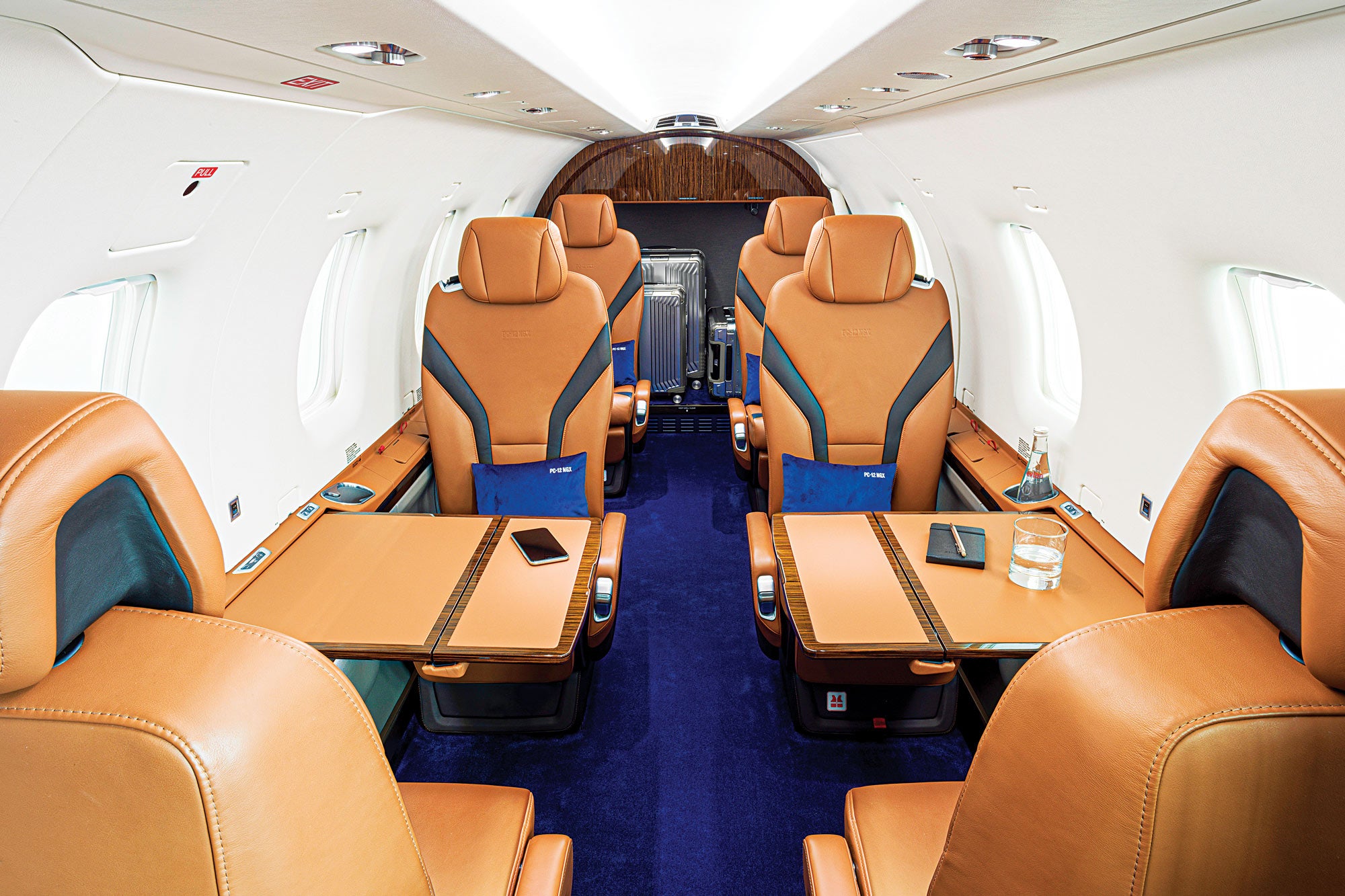
Flying the NGX
Jed Johnson, Tom Aniello and I headed out to fly serial number 2001 the afternoon I arrived in Broomfield because the weather forecasts looked ugly for the following morning, which turned out to be accurate. Our weather for the flight at KBJC turned out to be severe VFR with light winds.
After a walk around, I hopped into the left seat as Jed introduced me to the cockpit and coached me through a start. I found the cockpit light-jet comfortable without being cramped. Cockpit visibility is excellent. Should the NGX’s windshield heat fail, a triangle-shaped, direct-vision window on the left side offers the pilot enough of a view ahead to land. I tried to imagine I was flying the airplane single-pilot as I reached for necessary switches and buttons. The only item not within easy reach was the cockpit voice recorder and the flight-data recorder which are only checked before the first flight of the day.
Pilots of older PC-12s will be in awe at the automated start sequence. Turn on batteries one and two with all buses on, as well as the generators, avionics master and bleed air. Check for 24 volts and turn the engine switch to run. Briefly touch the start button, and once Ng (gas generator rotation speed)climbs above 13 percent, the fadec adds fuel. At 50 percent, the starter kicks out. That’s all there is to it.
Jed added a flight plan to the Epic system to take us to Garden City, Kansas, and ATC cleared us via the Plains One departure to Flight Level 270. The NGX is certified to FL 300. Before I taxied to the 7,000-foot-long Runway 30L at KBJC, the ATIS warned of potential slick spots along the way. There’s an interconnect between the rudder and the ailerons on the NGX, and because the nosewheel is so far in front of the mains, ground steering can take a little time to get used in order to keep the nose gear on the centerline—at least, it took me a few zigzags along the way. The beauty of Epic during taxi is its SmartRunway’s feature, which not only pinpoints the taxiways and runways but also shows ADS-B traffic. Brown targets are on the ground and blue ones are airborne. Most important are the red targets; pilots need to worry about those right now.
With an empty weight of 6,636 pounds, three people and a couple of hours of fuel, N47GX—as the airplane would soon be known after losing its Swiss registration number—weighed about 9,496 pounds. Maximum gross takeoff weight is 10,450 pounds. Jed calculated rotation speed at 78 knots. At the runway lineup, two chimes reminded us the outside air temperature was low enough to demand the probe heat on takeoff. Next came windshield heat and the inertial separator. As I brought the throttle up about halfway, the technology took over throttle movement and stopped once it reached the optimal takeoff power. As light as we were, the airplane demanded less than 2,000 feet of ground run before we were climbing away from the Rocky Mountains. Once the gear was in transit, the airplane climbed quickly through 400 feet agl, and Jed retracted the flaps. I engaged FMS speed, and the Epic selected a speed of 130 knots as I followed the flight director. Once the yaw damper came on, the NGX autotrims the rudder which makes the airplane handle like a jet—something I confirmed because I was hand-flying the aircraft.
Almost immediately, Denver Departure cleared us to 12,000 feet and turned us south toward DIA. A climb to FL 230 quickly followed as the FMS speed called for 140 knots to deliver a climb rate of about 1,600 fpm while burning 518 pounds of fuel per hour. We could have increased the climb rate, but that would have given us a steeper deck angle. For a cruise climb, 140 seemed to work fine.
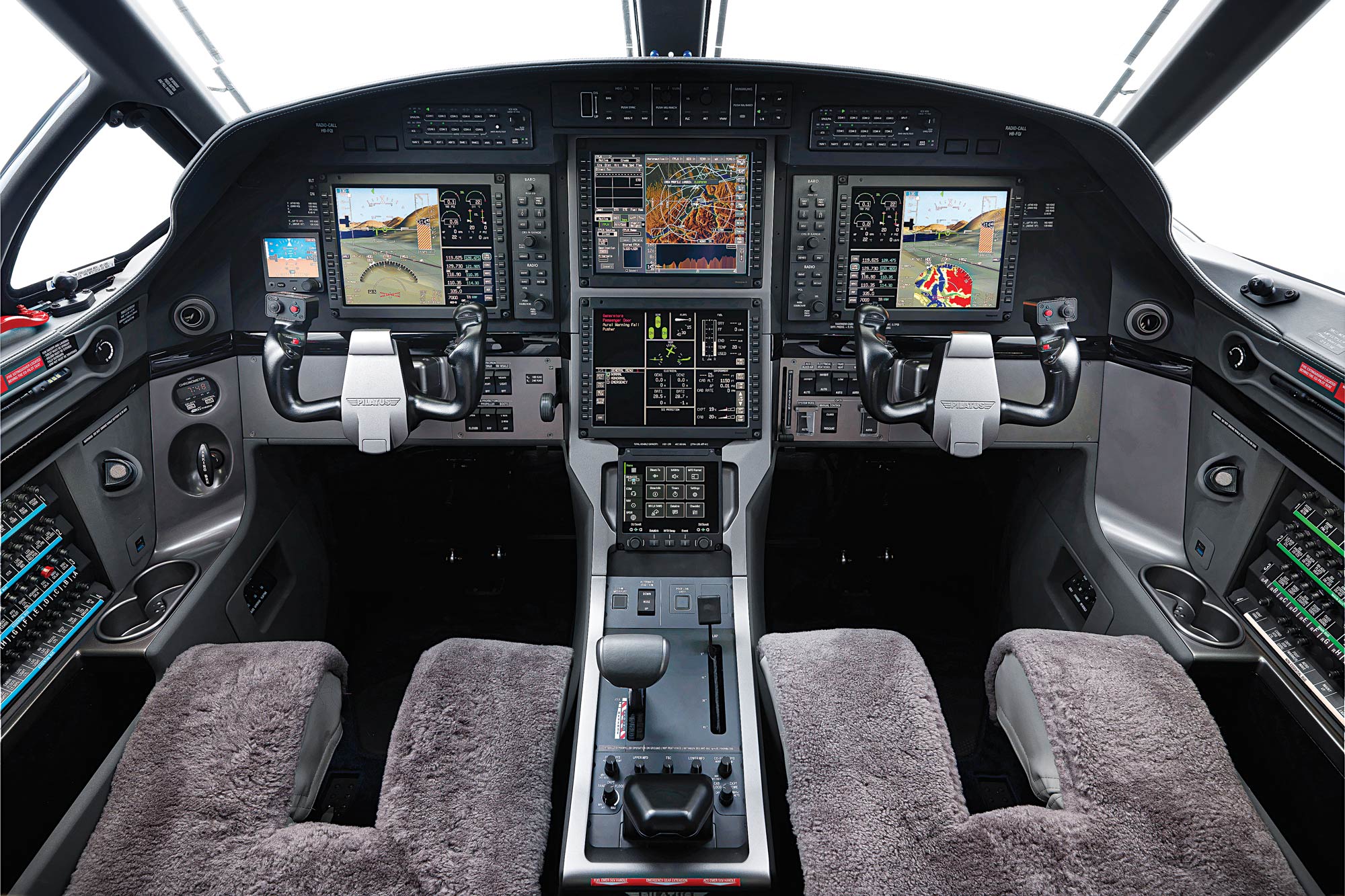
Passing through FL 180, I engaged the autopilot. Johnson said the NGX uses the same autopilot guts and features as the Embraer 175. Climbing through FL 200, the NGX indicated 126 knots, with a rate of 1,400 fpm on 456 pph. Leaving FL 240, I saw 1,400 fpm on 400 pph. The book said we should be burning 404 pph. That gave us three more flying hours with a reserve. Johnson said a 500-pound reserve is normal, and the minimum he’d feel comfortable landing with in the NGX was 350 pounds, or about 60 gallons. At FL 270, the cabin settled on 7,600 feet.
Along the way to Garden City, Johnson spoke about another Honeywell Epic capability. He said if he lost the engine, but feathered the propeller, he would feel perfectly confident setting up a visual approach with an 8-degree glideslope to a mountain airport at night and letting the autopilot fly the entire procedure down to the ground. That would sure beat the guessing and wandering around the sky most pilots would face after such a failure.
We canceled IFR to maneuver a bit west of KGCK. I flipped off the autopilot but left on the autothrottle. Johnson said within 20 miles of the destination airport and below 5,500 feet the AT will automatically slow the airplane to 150 knots—just right for gear and flaps—within 20 miles of the destination airport and below 5,500 feet. We tried a number of steep turns along the way with banks of 60 degrees in both directions. The NGX’s envelope protection quickly rolled the airplane back to no more than a 30-degree bank every time. The NGX seemed like a graceful airplane without a mean bone in its body.
Johnson suggested we try a visual approach to Garden City and watch the autopilot fly a precise traffic pattern as the VNAV brought us down a 3-degree slope to 500 feet, where I’d punch off the autopilot. Abeam Runway 35 but still away from the airport, I lowered the gear because we were still 4,000 feet agl. Our weight was relatively light, so Johnson suggested flaps at 30 degrees.
The NGX turned itself smartly onto the downwind and the base as it slowed to 110 knots. I confirmed the gear was down and selected flaps 30. The airplane slowed to 100 knots and eventually settled on ref plus 5, or about 85 knots. At 500 agl, I switched off the autopilot. As the radar altimeter counted down from 40, 30, 20, I eased the throttle back and pitched the nose up ever so slightly. The touchdown was nice and smooth. I tried to go easy on the brakes, and despite a little more zigzagging, we cleared the active and taxied into Saker Aviation Services, another PC-12 mission accomplished.
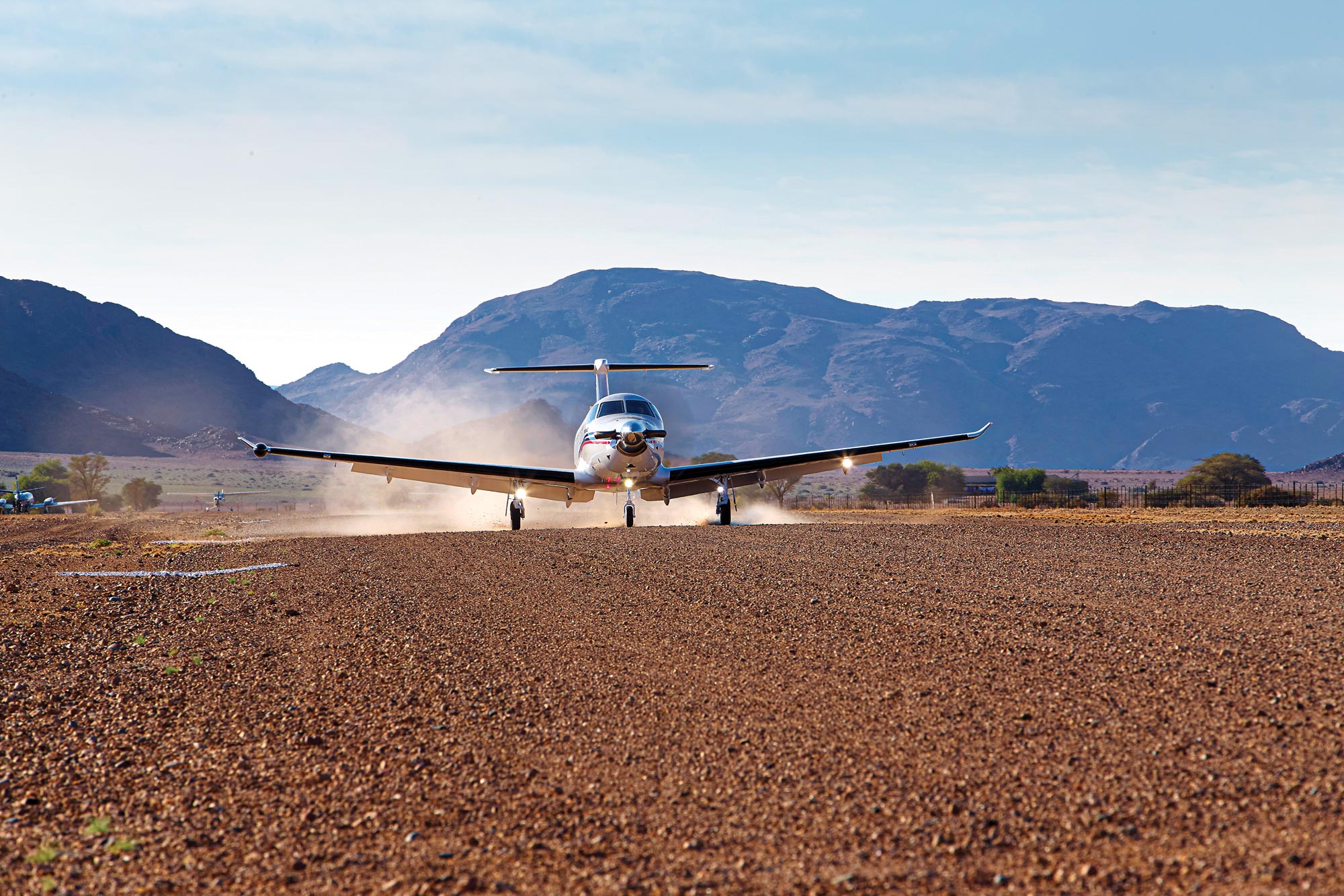
A Little PC-12 History
When Pilatus—then maker of the famous Turbo Porter single-engine STOL aircraft—announced the PC-12 in 1989, it saw the design as a highly efficient workhorse perfect for the utility, cargo and commuter airline, as well as air-ambulance segments. The first PC-12 prototype flew on May 31, 1991, with certification by the Swiss Federal Office of Civil Aviation on March 30, 1994. The FAA’s nod followed on July 15, 1994. Three decades later, it would be tough to look at the more than 1,750 PC-12s produced as anything other than a dream come true.
The PC-12 was certified to Part 23 standards to ensure the aircraft would be marketable in the US. That regulation demands a stall speed no greater than 61 knots: a problem easily solved with the PC-12’s big 70-percent-wingspan Fowler flaps. The PC-12’s wing was machined specifically with the thick pneumatic deicing boots in mind, so they fit flush to the airfoil for minimal drag. The aircraft was the first single-engine turboprop to offer a huge rear cargo door to more easily allow the cabin to swallow thousands of pounds of cargo in a single gulp. Even with six seats in the rear of the original airplane, the cabin offered an aisle wide enough for half a dozen people to move around without climbing over each other. Some critics saw the PC-12’s lack of a stand-up cabin as a drawback, but sales numbers seemed to indicate almost no one cared.
PC-12 updates have included engine and avionics changes to the original PC-12/41 airframe, as well as the Model 12/45 and the 12/47—which, for some unknown reason, became known as the Model 10. Others include the PC-12 Spectre for paramilitary and government operations and the US Air Force version known as the U-28A Draco. Pilatus began offering the model 47E in 2008, which was marketed as the PC-12 NG, the predecessor to the NGX.
This story appeared in the April 2020 issue of Flying Magazine
